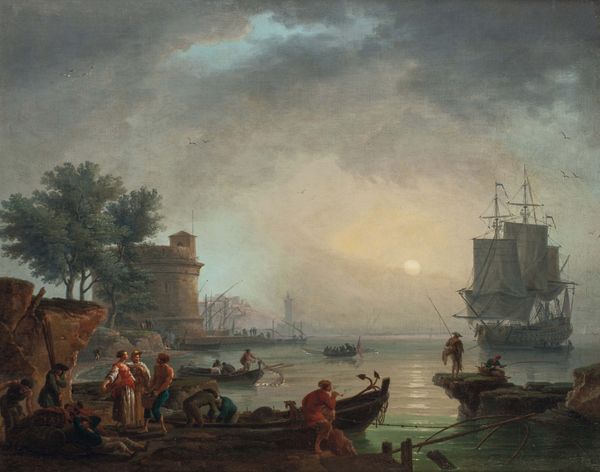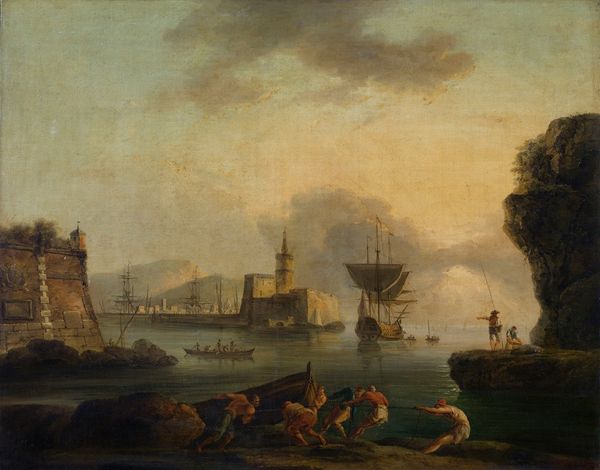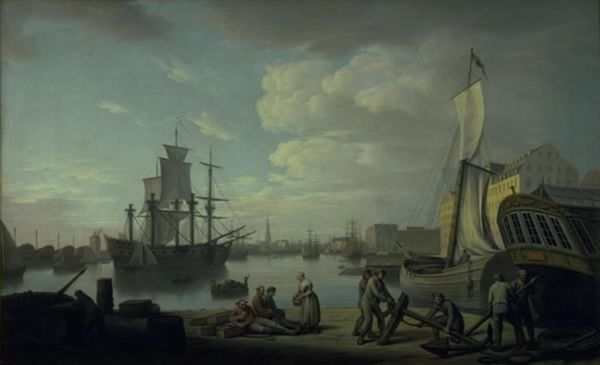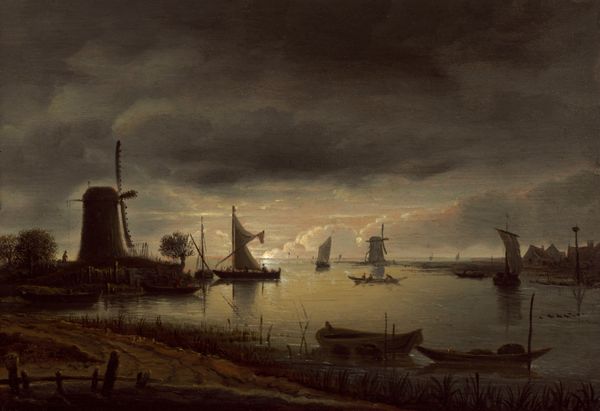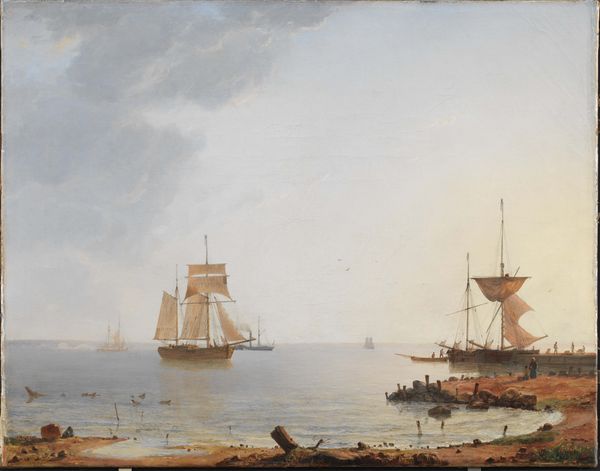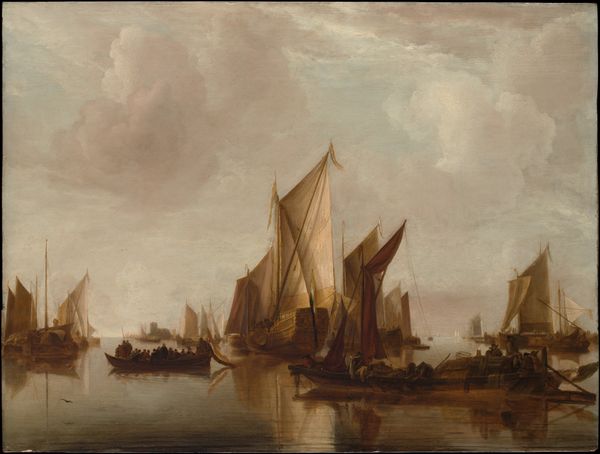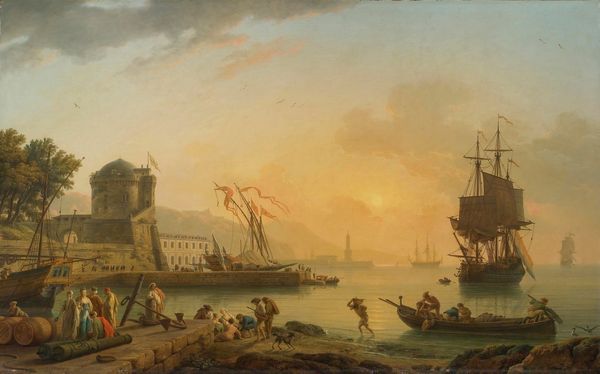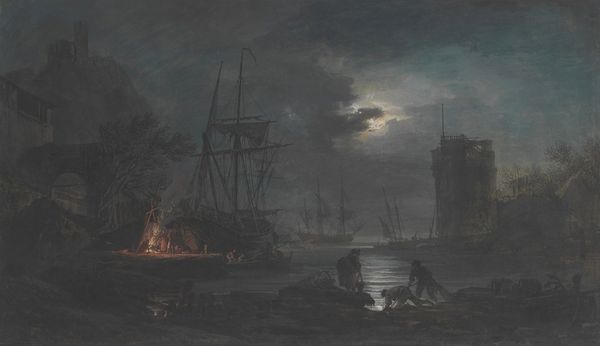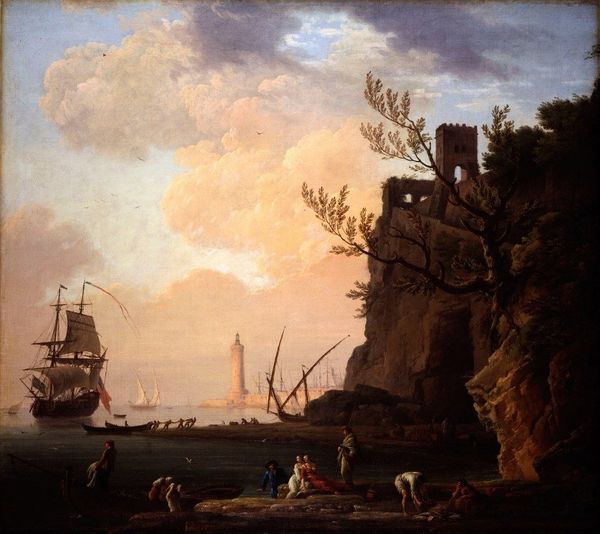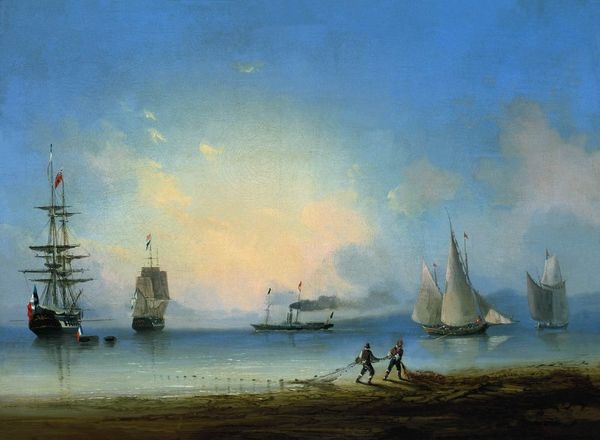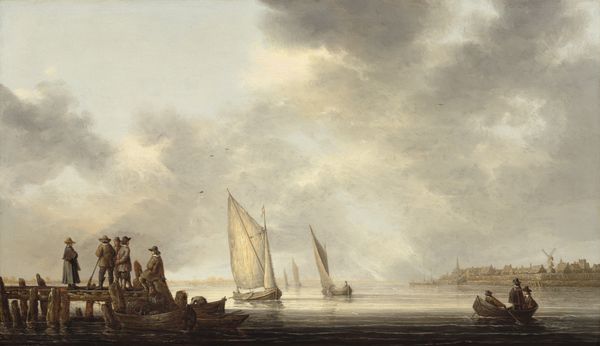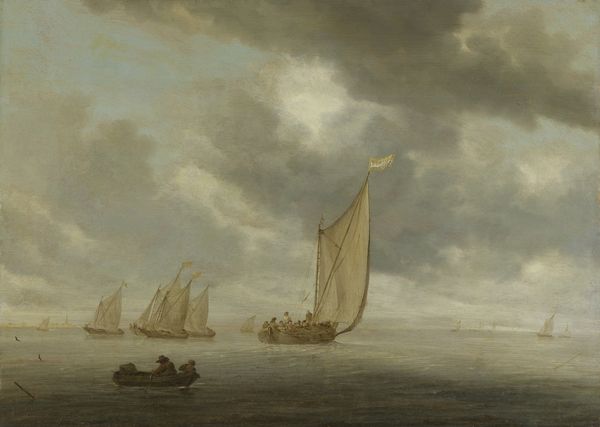
Dimensions: overall: 114.94 × 163.2 cm (45 1/4 × 64 1/4 in.)
Copyright: National Gallery of Art: CC0 1.0
Editor: Here we have "Moonlight," an oil painting by Claude-Joseph Vernet, created in 1772. I'm struck by how active the scene is despite being a nightscape. The moonlight makes everything glow, but it also casts long shadows. What do you see in this piece, looking at it from your perspective? Curator: Looking at Vernet's "Moonlight" through a materialist lens, I immediately consider the means of production. Oil paint, the dominant medium of its time, was itself a product of complex systems of trade and labor. The pigments, mined and processed, represent a history of exploitation and consumption. How does the use of oil paint contribute to the painting's romantic vision of labor? Editor: That's a good question, and something I hadn’t considered. How the very material shapes the message…The people on the shore seem to be laboring intensely, and you pointed out that even the making of the materials represents labor too. Curator: Precisely! Note the contrast: on one hand we have this almost idealized presentation of work alongside this raw presentation of labor near the shore; meanwhile the material realities of shipbuilding – the timber felled, the sails woven, the ropes braided – are absent. Does this romanticized portrayal serve to obscure the harsh realities faced by the working class who were involved with sea trade, the fishermen and port workers that depended on it? Editor: It makes you think about whose story is being told here. Almost like the elite getting to see something picturesque without experiencing it. Curator: Indeed. Vernet presents us with an image that aestheticizes labor, divorcing it from the broader context of social and economic inequality that defines the system of trade, exploitation, and consumption inherent to a port at its time. Editor: So, in essence, the materiality and method behind ‘Moonlight’ makes us question the representation of the working class and makes us reflect on the hidden hands that were involved, especially related to international trade in 1772. Thanks for opening my eyes! Curator: My pleasure.
Comments
No comments
Be the first to comment and join the conversation on the ultimate creative platform.
